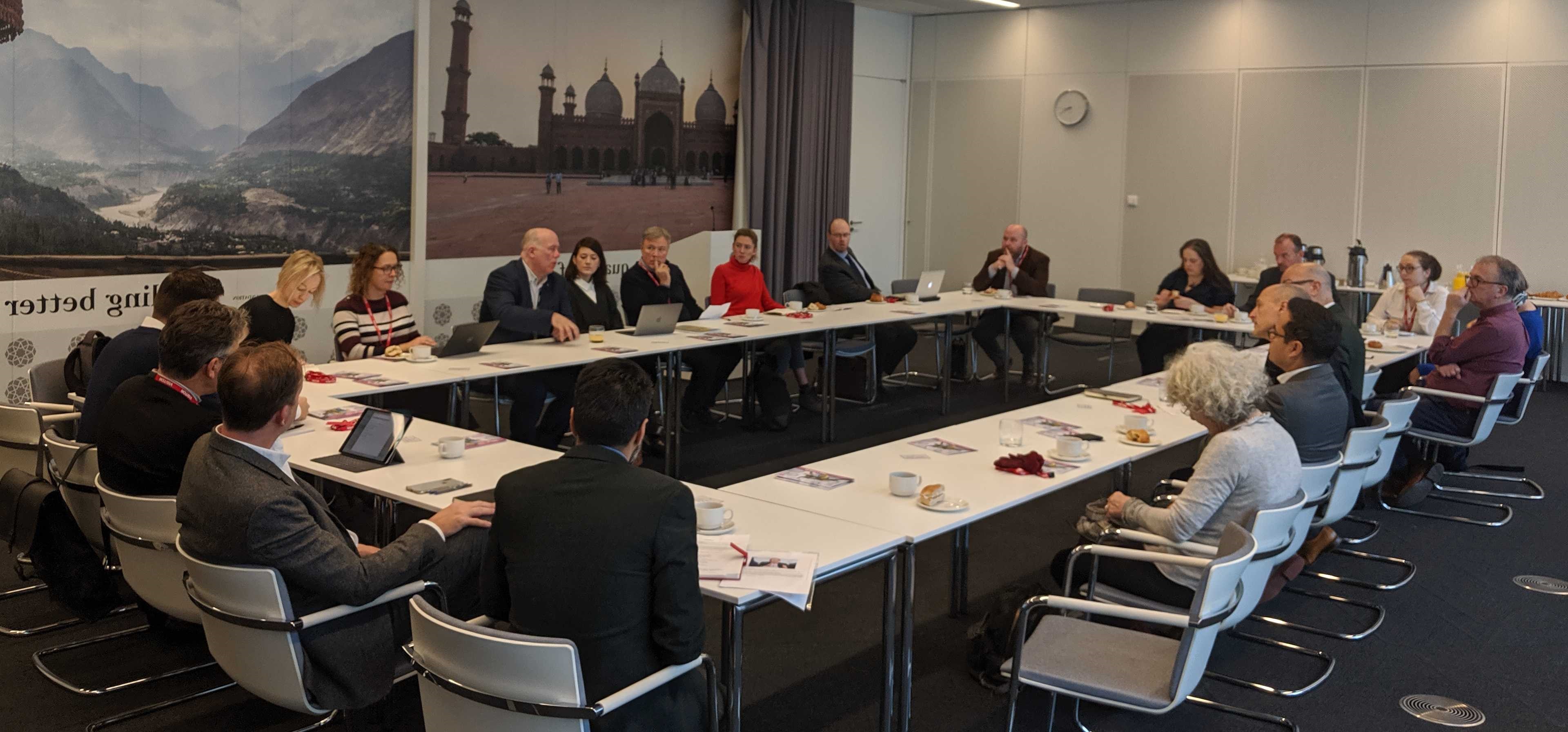London in 2020: Stakeholder Breakfast
13 November 2019, The Aga Khan Centre
On the 13 November 2019 over 25 representatives from across the Knowledge Quarter partnership came together to discuss London in 2020 and what a new decade will look like for the capital. The event took place at the Aga Khan Centre in London which opened in 2018 to house the Aga Khan Foundation (UK), Institute of Ismaili Studies, Aga Khan University and Institute for the Study of Muslim Civilisations.
Speakers included Simon Cane, Director of UCL Culture and Chair of the Knowledge Quarter, Ben Rogers, Director of Centre for London and Lara Kinneir, Director of New London Architecture.
The discussion focused on the following areas:
London over the last decade
In 2017 London’s GVA accounted for approximately 24 percent of the UK’s total, up from 19 percent in 1997. The economy has boomed in the last decade, in part due to reurbanisation of the economy and culture, the role of the knowledge economy and the rise of London’s universities. Some statistics that reflect the changing landscape of London:
- When Crossrail opens London will have doubled its rail capacity over the last ten years.
- One-third of all Londoners are born abroad, reflecting London’s diversity
- Unemployment is at a record low (although earnings have flat-lined)
However, London was seen as a victim of its own success, becoming the most congested city in Europe as well as combating growing health inequality and a housing crisis. The face of poverty has also changed. From someone living in inner London and unemployed to someone in employment but privately renting outside of inner London. Homelessness has increased by 150 percent over the last decade and 5 percent of Londoners now own 50 percent of the wealth of the city.[1]
This led to dialogue around:
- The changing definition of what makes up a city and how it should be defined moving forward.
- How to define poverty and whether this should change going forward to better tackle it.
- The role of Knowledge Clusters in contributing to the Knowledge Economy as well as their role at the local community level.
- How we define health and wellbeing as a reflection of social connectivity.
[1] Statistics: My Fair London
The Built Environment
London 2020 was seen to be about connecting the dots spatially, economically and socially, whatever the outcome of Brexit. There may be a larger role for tech in this connectivity. However, it depends on how it is applied, something that 2020 will decide. The New London Plan is set to be published in February/March 2020 and will influence London’s built environment.
The role of streets in London’s built environment was discussed. New London Architecture’s latest piece of research is entitled ‘Future Streets’ and will set out what type of city Londoners want to inhabit and the role of streets in reflecting a society, its values, and its future.
Regional Disparity across the UK
Regional disparity across the UK is one of the highest within the OEDC. The UK has the 6th highest economic disparity out of 30 OECD countries. This disparity has increased in the last 16 years[1]. With Brexit approaching, participants felt that both regional disparity and ‘anti-London’ sentiment would increase.
This led to the following discussions:
- The prospect of devolution and regionalisation.
- The regional connectivity HS2 would provide to the area.
- The idea that knowledge cannot be regionalised as it has no border.
- London’s focus on itself as a ‘world city’ as opposed to its role nationally and how this may lead to regional disparity.
[1] OECD Regions at a Glance 2018 – United Kingdom, updated March 2019
Local Communities
One participant remarked that organisations “[do] a lot of talking and not enough listening.” Local residents have a voice but need to be empowered to use it. Many local residents and communities in London are becoming more outspoken to new developments. The built environment sector is changing to take this into account. Going forward we cannot have conversations about developments that will displace or largely affect local residents without their significant and meaningful input.
The role of public spaces in social infrastructure and their diminished availability was also mentioned. More private spaces are currently being used in a public manner than government-built public spaces.
“What a city is should be more than the total sum of the people in it.”


